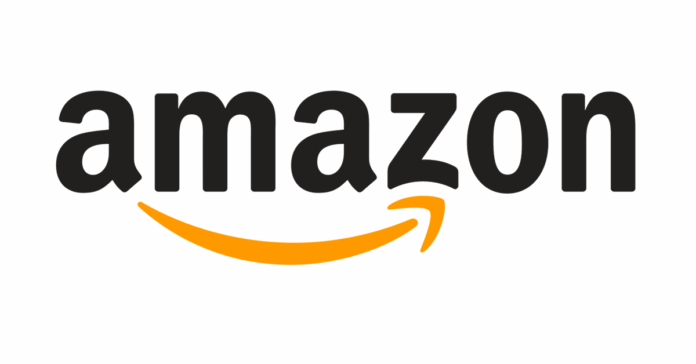We used five years of financial data to examine….
As one of the world’s largest companies, Amazon (AMZN) continues to captivate investors with its dominance in e-commerce, cloud computing, and innovation. However, with a stock price of $212.52 as of June 18, 2025, is Amazon a bargain or overpriced? Using the Buffett and McGrew Valuation Methods, I conducted a detailed intrinsic value analysis based on five years of financial data, including Free Cash Flow (FCF), shares outstanding, and growth projections. The results suggest Amazon may be significantly overvalued, but limitations in the model warrant a closer look. Let’s dive into the analysis, methodology, and implications for investors.
Methodology: Buffett and McGrew Valuation Methods
The analysis follows the framework outlined in the Buffett Valuation Method (inspired by Warren Buffett’s Discounted Cash Flow approach) and the McGrew Valuation Method, both designed to estimate a stock’s intrinsic value. These methods project future FCF, discount it to present value, and apply a 25% margin of safety to account for uncertainties. The valuation status is determined by comparing the stock’s closing price to its intrinsic value:
- Screaming Buy: Closing price ≥ 25% below intrinsic value.
- Buy: Closing price 7% to 25% below intrinsic value.
- Hold: Closing price 6% below to 35% above intrinsic value.
- Overvalued: Closing price > 36% above intrinsic value.
I used five years of financial data (2020–2024) sourced from Amazon’s quarterly cash flow and balance sheet statements, with the latest FCF from the trailing twelve months (TTM) ending March 31, 2025. The closing price of $212.52 was provided, assumed to be from June 18, 2025.
Data Inputs
Free Cash Flow (FCF)
FCF, a critical measure of a company’s ability to generate cash after capital expenditures, was calculated by summing quarterly FCF for each year:
- 2024 (TTM): $20.81 billion
- 2023: $32.22 billion
- 2022: -$16.89 billion
- 2021: -$14.73 billion
- 2020: $25.93 billion
Negative FCF in 2021 and 2022 reflects Amazon’s heavy investments in infrastructure and AWS, a common trait for growth companies. The 2024 TTM FCF of $20.81 billion, including Q1 2025, shows a recovery but remains below 2023 levels.
Shares Outstanding
As of March 31, 2025, Amazon had 10.613 billion ordinary shares outstanding, consistent with recent quarters, indicating minimal dilution.
Growth Projections
The 5-year FCF Compound Annual Growth Rate (CAGR) was calculated as:
- CAGR = (20,810,000,000 / 25,925,000,000)^(1/4) – 1 ≈ -5.47%
The negative CAGR, driven by negative FCF in 2021 and 2022, complicates growth projections. Per the methodology, since the CAGR is ≤10%, Amazon is classified as a stable stock with a 5% growth rate for both valuation methods. For the McGrew Valuation, a CAGR ≤10% means it mirrors the Buffett Valuation parameters (5% growth for Years 1–10, 2.5% perpetual growth, 8% discount rate).
Buffett Valuation Method
- FCF Projection: Starting with the 2024 TTM FCF of $20.81 billion, I projected FCF for 10 years at a 5% growth rate. For example:
- Year 1: $20.81 billion × 1.05 = $21.85 billion
- Year 10: $33.90 billion
- Terminal Value: In Year 10, the terminal value was calculated as:
- Terminal Value = $33.90 billion × (1 + 0.025) ÷ (0.08 – 0.025) ≈ $631.72 billion
- Discounting: Using an 8% discount rate, I discounted the FCFs and terminal value to present value. The sum of present values was $451.89 billion.
- Intrinsic Value per Share: Dividing by 10.613 billion shares yields:
- Intrinsic Value = $451.89 billion ÷ 10.613 billion ≈ $42.58
- Margin of Safety: Applying a 25% margin:
- Price = $42.58 × 0.75 ≈ $31.94
McGrew Valuation Method
Since the 5-year FCF CAGR (-5.47%) is ≤10%, the McGrew Valuation uses the same parameters as the Buffett Valuation (5% growth rate). Thus, the results are identical:
- Intrinsic Value per Share: $42.58
- Price with 25% Margin of Safety: $31.94
Valuation Status
Comparing the closing price of $212.52 to the intrinsic value of $42.58:
- Percentage Difference: ($212.52 – $42.58) ÷ $42.58 × 100 ≈ 399.06%
- Since $212.52 is 399.06% above $42.58 (and > $57.48, the 36% threshold), Amazon is Overvalued.
Results Table
| Stock Ticker | Valuation Method | Intrinsic Value per Share | Price with 25% Margin of Safety | Last Closing Price | Valuation Status |
|---|---|---|---|---|---|
| AMZN | Buffett Valuation | $42.58 | $31.94 | $212.52 | Overvalued |
| AMZN | McGrew Valuation | $42.58 | $31.94 | $212.52 | Overvalued |
Analysis and Implications
The intrinsic value of $42.58 suggests Amazon’s stock is trading at a significant premium, nearly 400% above its estimated fair value. This overvaluation signals caution for value investors following Buffett’s principles, as the current price far exceeds the margin of safety price of $31.94. However, several factors and limitations must be considered:
- Conservative Growth Assumptions: The negative 5-year FCF CAGR (-5.47%) led to a conservative 5% growth rate assumption. Amazon’s historical revenue growth and AWS expansion suggest higher future growth potential, which the model may underestimate. Market expectations of robust growth in cloud computing and AI could justify the high stock price.
- Negative FCF Impact: The negative FCF in 2021 and 2022 reflects Amazon’s capital-intensive strategy, including warehouse expansions and data centers. While this depresses historical FCF, it may fuel future profitability, not fully captured by the 5% growth rate.
- Model Limitations: The Buffett and McGrew methods rely heavily on FCF, which can be volatile for growth companies like Amazon. Alternative metrics, such as revenue growth or operating income, might provide a more favorable valuation. Additionally, the 8% discount rate and 2.5% perpetual growth rate are standard but may not reflect Amazon’s unique risk profile or long-term potential.
- Market Sentiment: Amazon’s stock price reflects investor optimism about its ecosystem, including Prime, advertising, and AI initiatives. The market may be pricing in growth opportunities beyond the 10-year projection horizon.
Based on the Buffett and McGrew Valuation Methods, Amazon (AMZN) appears significantly overvalued at $212.52, with an intrinsic value of $42.58 per share. Value investors may find the stock unattractive without a substantial price correction. However, the model’s conservative assumptions and reliance on historical FCF may not fully capture Amazon’s growth trajectory. Growth-oriented investors might still see value in Amazon’s long-term prospects, particularly in AWS and emerging technologies. For those considering AMZN, further analysis using alternative valuation models or updated 2025 data is recommended.
#AMZN #StockValuation #Investing #BuffettValuation #McGrewValuation #AmazonStock #ValueInvesting #StockMarket #Finance

